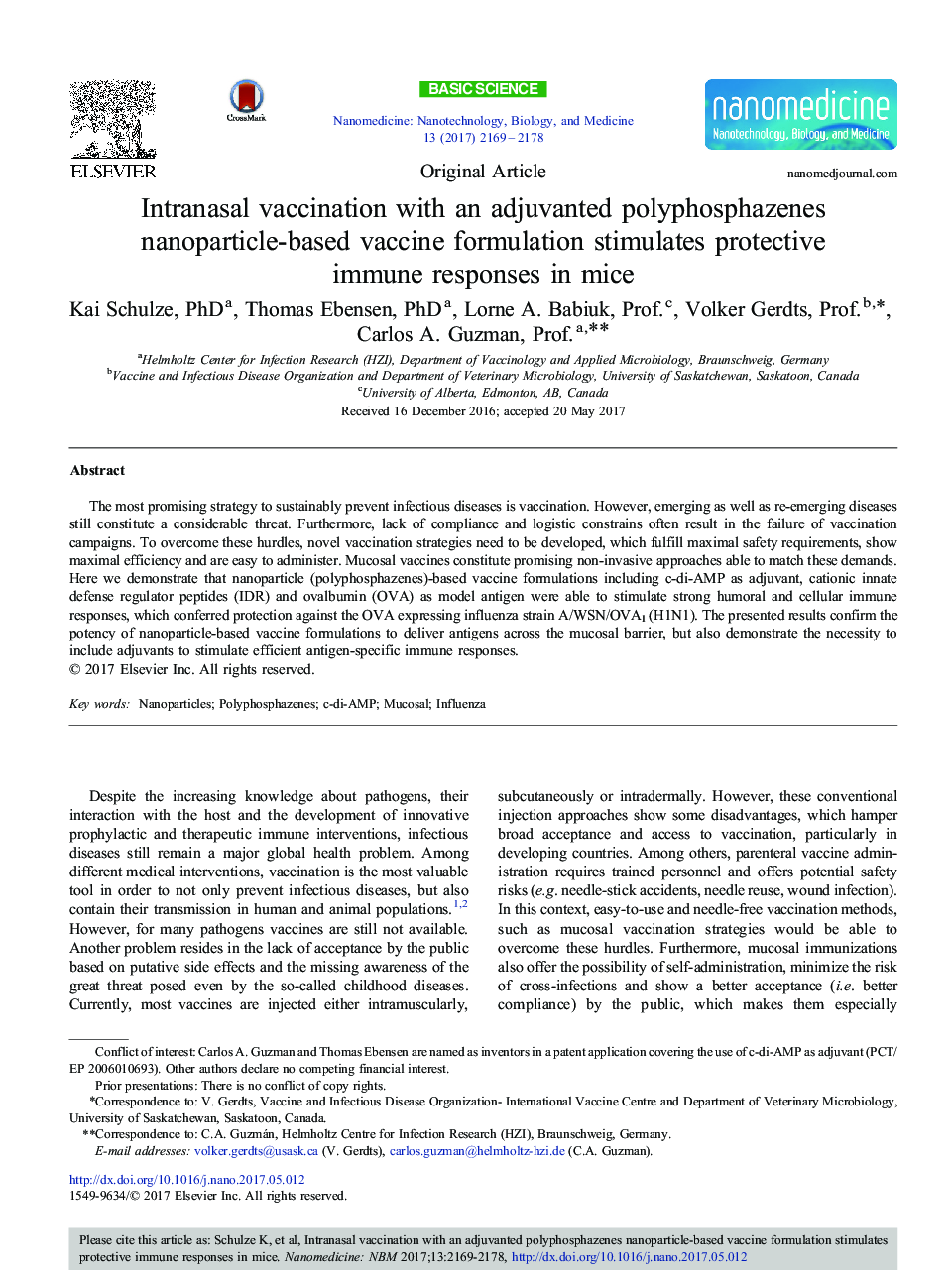| کد مقاله | کد نشریه | سال انتشار | مقاله انگلیسی | نسخه تمام متن |
|---|---|---|---|---|
| 5033020 | 1370004 | 2017 | 10 صفحه PDF | دانلود رایگان |

The most promising strategy to sustainably prevent infectious diseases is vaccination. However, emerging as well as re-emerging diseases still constitute a considerable threat. Furthermore, lack of compliance and logistic constrains often result in the failure of vaccination campaigns. To overcome these hurdles, novel vaccination strategies need to be developed, which fulfill maximal safety requirements, show maximal efficiency and are easy to administer. Mucosal vaccines constitute promising non-invasive approaches able to match these demands. Here we demonstrate that nanoparticle (polyphosphazenes)-based vaccine formulations including c-di-AMP as adjuvant, cationic innate defense regulator peptides (IDR) and ovalbumin (OVA) as model antigen were able to stimulate strong humoral and cellular immune responses, which conferred protection against the OVA expressing influenza strain A/WSN/OVAI (H1N1). The presented results confirm the potency of nanoparticle-based vaccine formulations to deliver antigens across the mucosal barrier, but also demonstrate the necessity to include adjuvants to stimulate efficient antigen-specific immune responses.
Vaccination is regarded as one of the most effective medical interventions, lowering both morbidity and mortality associated with infectious diseases. However, efficient non-invasive vaccination strategies are desperately needed to meet the current challenges of vaccine development. Thus, to overcome the limitations of common needle vaccines, e.g. lack of patient comfort and compliance and potential safety concern associated with needle-stick accidents, a variety of needle-free vaccination methods are under development. The present work clearly demonstrates the potential of nanoparticulate systems as an approach to deliver vaccine antigens and adjuvants across mucosal membranes resulting in the stimulation of protective immune responses.91
Journal: Nanomedicine: Nanotechnology, Biology and Medicine - Volume 13, Issue 7, October 2017, Pages 2169-2178